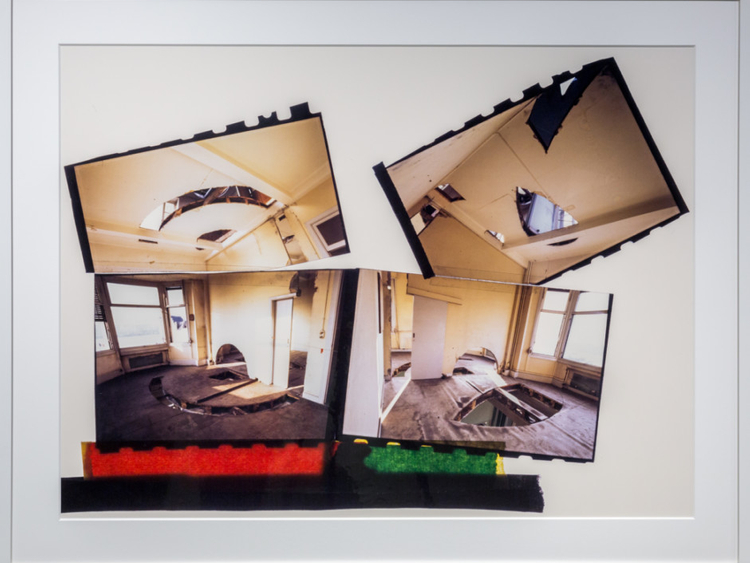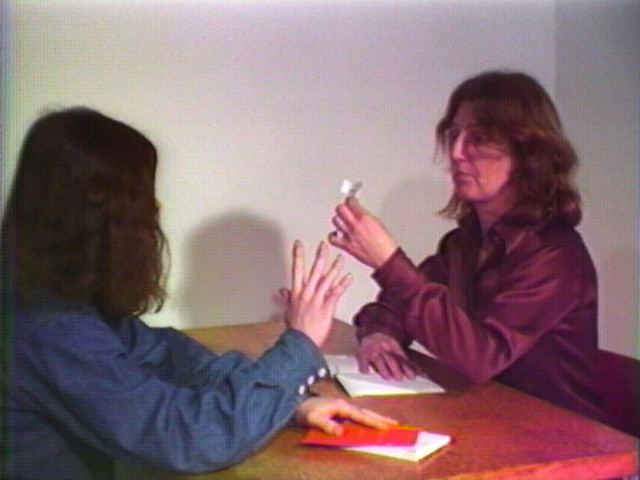
The latest exhibition at the Jean-Paul Najar Foundation, Artist Run New York: the Seventies, takes us back to the 1970’s when artists living and working in New York began questioning the very essence of art, transforming the way contemporary art was created, exhibited and experienced until then. Artists such as Philip Glass, Trisha Brown, Richard Landry, Gordon Matta-Clark and others broke the boundaries of the traditional art world by rejecting the white cube gallery space and the art market, and engaged directly with the everyday lived environment of the city, its architecture, culture, politics, people and social issues. They developed an artist run culture that redefined everything about art, such as what constitutes an artwork, what is an art space, the role of an artist in society, and the ability of artists to create meaningful change. This community of artists took on the primary role in developing and sustaining new work, creating cross-disciplinary collaborations that have changed our understanding of art, and an artistic legacy that continues to impact the contemporary art world even today.
Curator Jessamyn Fiore has brought together groundbreaking works from this exciting period by artists from various fields such as Trisha Brown, Tina Girouard, Philip Glass, Robert Grosvenor, Suzanne Harris, Jene Highstein, Nancy Holt, Joan Jonas, Richard Landry, Gordon MattaClark, Elizabeth Murray, Richard Nonas, Alan Saret, Keith Sonnier, John Torreano, Richard Tuttle, Lynn Umlauf, and Lawrence Weiner. The artworks include photography, video, painting, sculpture, drawing, writing, performance pieces, and archival materials that reflect the creativity and spirit of experimentation of the time.
The show also explores famous artist run spaces such as 112 Greene Street, and Food Restaurant, which emphasized the artistic community over commercial considerations, and became focal points for the emergence of a new art culture. Since many of the featured artists were multidisciplinary, their works highlight the unique collaborations that happened between the visual art world and performance, film, theatre, dance, writing and music during that decade, and the long term influence they have had on each medium.
The Jean-Paul Najar Foundation for Contemporary Art is a non-profit ICOM registered private museum, gathering abstract European and American art from the 1960’s to the present. It also has a remarkable archive tracing forty years of artist-collector exchanges. The main mission of the Dubai based museum is education, and it presents programs that encourage discovery and inquiry. By showcasing these early experimental works that help us to understand the foundation of contemporary art today, the Foundation aims to help in preserving this important legacy, and to invite a new generation to experience this incredible period in contemporary art history. The exhibition is accompanied by a programme of performances and educational workshops that offer deeper insights into the artist run New York of the 1970’s.
Among the best documentations of the time are the photographs Richard Landry took of his fellow artists as they worked or relaxed together. Landry who is a well-known saxophonist, was an integral member of the avant-garde experimental music scene from the 1970s, and a founding member of the original group that became the Philip Glass Ensemble that he performed with from 1969-1981. He moved to New York City in 1969 with his then wife Tina Girouard, and quickly became part of the downtown New York art scene. He often helped the artists with their installations and performances, and photographed their projects creating an incredible series of images that capture the projects, processes and artistic collaborations indicative of this vibrant art scene. The show features a set of his black and white photographs that provide an insider’s view of the community.
Matta-Clark was a central figure in the downtown New York City art community until his untimely death in 1978. He was also the owner along with Carol Goodden, of Food Restaurant, which became the hub of artist run New York. The artist is best known for his large-scale architectural ‘cuttings’ where he would physically alter entire buildings, transforming them through a series of large cuts that exposed the building layers and opened them up to the elements. He complimented his architectural and city interventions with a series of films. The show includes pictures of his ‘cuttings’ and a silent film, City Slivers, where he used the material of the film itself to create a series of slivers, or cuts of everyday city life in New York, showing not only the city’s architecture, but also the traffic and people moving through their daily routine.
Another work by the artist, Office Baroque, is a Cibachrome photograph made in 1977 in what was the former office of a shipping company in the port of Antwerp, that had gone out of business (broke). Matta-Clark cut a series of ellipses through the floors of the building, each slightly different as a kind of theme and variation that one would find in the patterning of Baroque music. The intersection of the ellipses created a boat shaped cut, reflecting the original business and also playing on the similarity in the sound of the words ‘baroque’ and ‘broke’. Unfortunately, like all of Matta-Clark’s large-scale architectural interventions, the building was eventually destroyed. To preserve the experience of his artworks, the artist did not just document them. He took the images and physically collaged the negatives together to create cibachrome photographs, that reflect what it was like to be in the work itself, and feel the transformation, and disorientation of the space after the cuts.
Musicians such as Landry and Glass became part of this art scene because at that time their experimental music was only accepted by the art world, and most of their performances were held in museums and galleries. Glass is represented in the show with a recording of a performance by the Philip Glass Ensemble of Einstein on the Beach, which is his first and longest opera score.
Performance art was an important element of the new art culture. A good example is Water Motor, a two and a half minute, silent, black and white film of a performance by Trisha Brown, shot by Babette Mangolte in 1978. Brown’s choreography in this key early work features movements derived from everyday gestures, extended into a fluid sequence that suggests both the flow of water and the intensity of a motorized engine.
Joan Jonas channeled influences from visual art, Japanese theatre, dance and sound into ground breaking performative and video works. Like many of the artists in the community who embraced the city itself as their material, she activated the cityscape by making it her art space through a series of outdoor performances in either natural or industrial settings. Song Delay, a film of her performance from 1973, displayed in the show, emphasizes this relationship to space by creating a distance with the viewer, through the use of telephoto and wide angle lenses, and a delay between the sound and the actions that produce the sound. With many of her fellow artists performing in the film, the work also illustrates how this community of artists supported one another.
Suzanne Harris founded a dance company called Natural History of the American Dancer that explored improvisational techniques in contemporary dance. Through her experimentation and collaboration in dance she began to make objects and installations that were activated by the performer’s body. Her film Wheels/Flying Machine, in the show, captures her first solo exhibition at 112 Greene Street. For the piece Flying Machine, a twelve-foot-long wooden structure with nylon ropes and cables was built to suspend people while simultaneously, lifting them up from the floor to float and dance in the air, simulating the experience of flying. The piece Wheels was a large installation of giant interlocking wooden wheels, which would rotate in unison when the dancers’ bodies moved.
The community also included Richard Nonas, an anthropologist who had spent years living with native American tribes in an isolated village in Mexico. Unable to express his experiences in words, he turned to sculpture, where he could communicate abstract ideas and feelings through objects.
Other works such as Alan Saret’s cloud like sculpture made from nickel wire; and Robert Grosvenor’s rubberized Steel Pipe, illustrate how these artists played with materials to challenge our perceptions of the material world around us.
Artist Run New York: the Seventies will run at the Jean-Paul Najar Foundation in Alserkal Avenue, Al Quoz until June 30.














